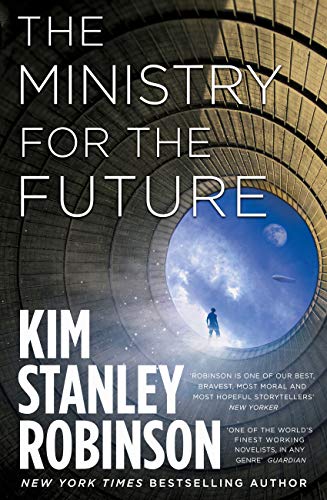The Ministry for the Future
Kim Stanley Robinson’s clifi novel The Ministry for the Future (Orbit 2020) takes place not in a distant imagined future but in the late 2020s and 2030s, when climate breakdown manifests in the deaths of millions of people within a single week. The resulting crisis triggers a series of developments in climate activism, geopolitics, environmental engineering, refugee movements and global governance. The novel thus serves as a test-case of sorts for framing the challenges of the environmental humanities according to multiple cross-disciplinary perspectives. It is also, implicitly, a response to the question posed by Amitav Ghosh’s study of world literature in the age of climate chaos: ‘is it the case that science fiction is better equipped to address the Anthropocene than mainstream literary fiction?’ (The Great Derangement: Climate Change and the Unthinkable, 2016). If literature’s apparent failure hitherto to meet the demands of representing the climate crisis is ultimately a failure of the imagination, as Ghosh argues, what does this imply about the kinds of resources necessary not simply to represent, but to resist, the worst?
For the purposes of this reading group, we will examine the novel's premise and narrativization of catastrophe by drawing on the expertise of members from the Environmental Humanities Network and beyond. We aim to compile a list of resources and publications relevant to a reading of the novel as a response to various debates and controversies: among others, the question of violence in environmental activism, the case for degrowth, the viability of geo-engineering schemes and the role of inter-governmental institutions in combating climate breakdown.
The novel is available for ordering via your local independent bookshop. An epub copy is available here.

